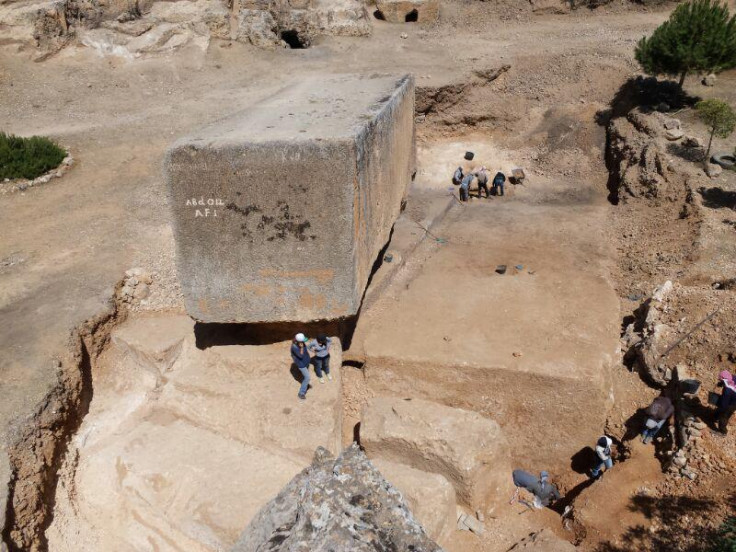World's biggest monolithic stone block discovered at Baalbek Roman sanctuary in Lebanon

A massive stone block dating to 27BCE has been discovered in the Roman sanctuary of Baalbek in Lebanon.
Researchers from the German Archaeological Institute uncovered the monolithic block earlier this year while excavating the quarry of Baalbek.
The stone block is almost 20m long, 6m wide and 5.5m high. It weighs approximately 1,650 tonnes, and is the largest known block to have been carved by human hand.
Similar stones of its size were used as the podium of the Temple of Jupiter - but it was never transported, researchers said. The base of the Temple of Jupiter is made up of huge limestone blocks, with the base stones weighing about 1,000 tonnes.
Baalbek was known as Heliopolis during Roman rule and was one of the largest sanctuaries in the Empire. It is home to some of the best preserved Roman ruins in Lebanon.
The stone was found near two other massive blocks, one weighing about 1,240 tonnes and the other - the Hajjar al-Hibla, or The Stone of the Pregnant Woman - weighing about 1,000 tonnes. The latest block was found under the Hajjar al-Hibla.
Experts said the level of smoothness and size specifications suggest it was meant to be transported as one piece, making it the "biggest boulder known from antiquity".
Archaeologists are now trying to establish why the stone was not completed and left in the quarry, and how it could ever have been transported.
"The aim of this year's excavations was to find new data mining technology and transport these megaliths," they said.
Experts believe the stone block was not transported because it there was a crack in one of the corners, meaning it would probably have cracked during transportation.
© Copyright IBTimes 2025. All rights reserved.






















